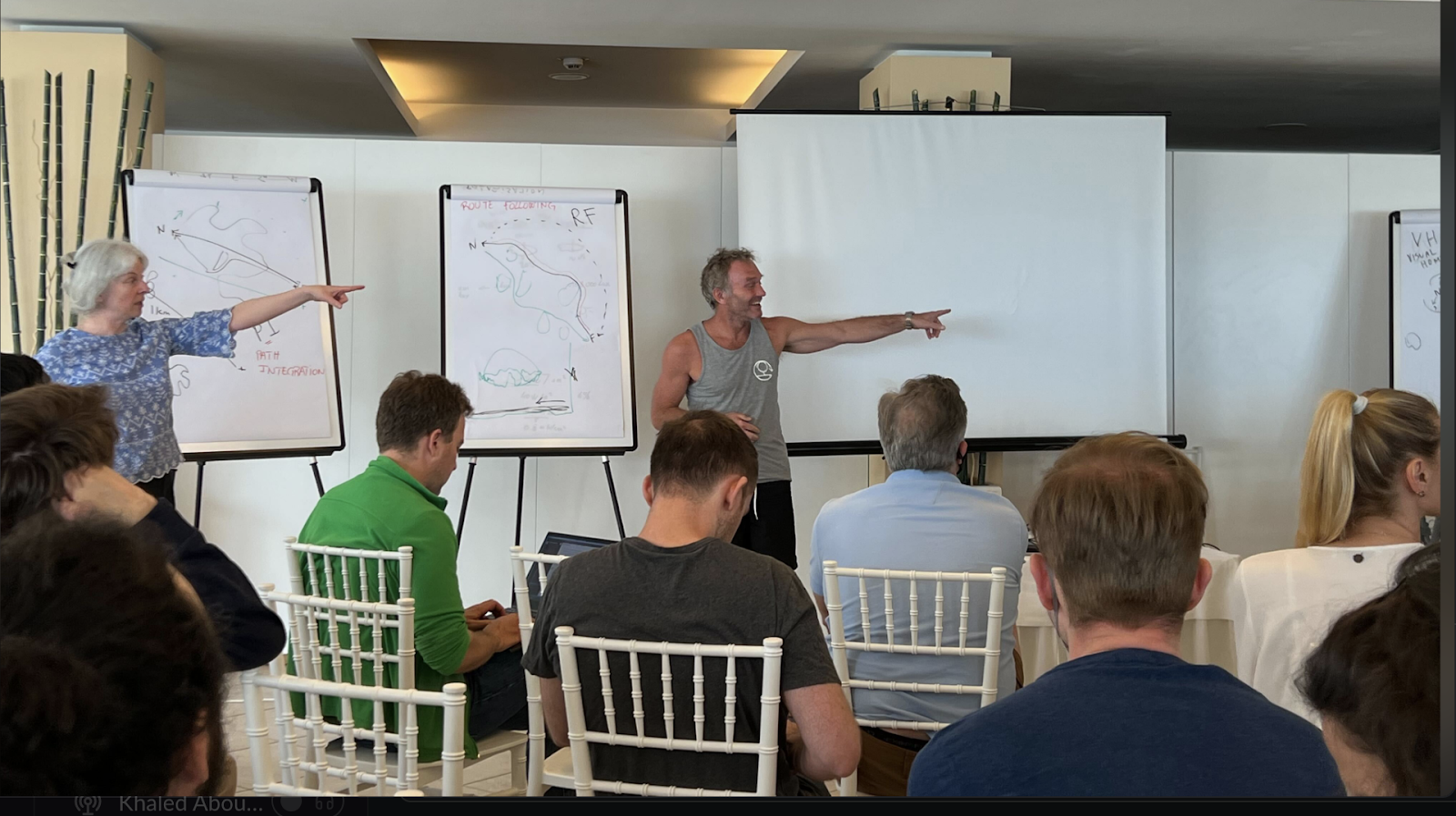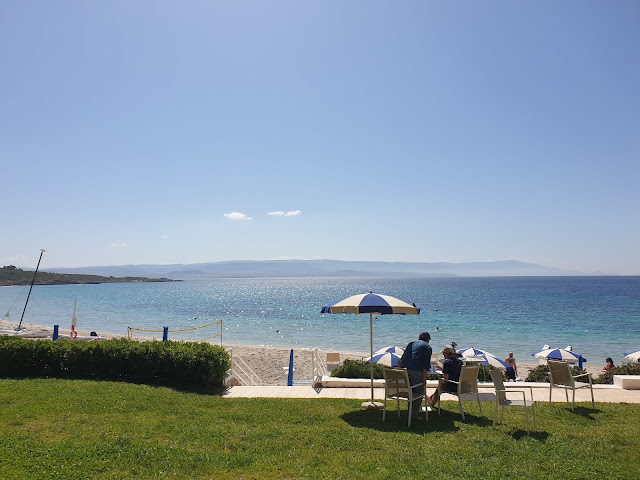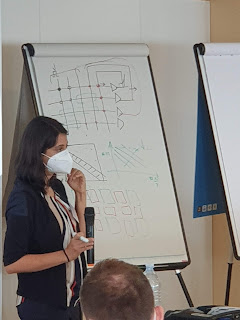Day 3 on Navigation: Barbara Webb, Julien Serres and Pavan Ramdya
Barbara started by asking only students (and not faculty and navigation experts) to say what comes to their minds when they think about the navigation. These are the words that were mentioned:
Someone asked if insects try to minimize energy usage? They are trying to come back to the nest as soon as they can.
After Barbara, Julien Serres talked about other mechansims by which insects find their way. One is the magnetic compass and the other is the polarization.
Julien is showed his direction polarization device. Direction polarization is what also helps for navigation. Florian mentions that the problem is to find the direction of the sun. If the sun is not in the sky it helps to find the direction of the sun. If it is in the sky it is not a hard problem. Especially if the sun is below the horizon but you have a very good polarization direction.
Julien further elaborated that the wind doesn’t affect the sky in terms of information, but some insects do use wind as a semi-reliable cue for navigation. However, it doesn’t change the way polarization sets in the sky. Dung beetles are good examples of using wind and polarization to move their so-called “dung”.Optic flow is the angular velocity of the contrasted features moving in your visual field. There are many properties inside the optic flow but the major useful information is the optical velocity of the ground. When you are moving along the ground, you can see an apparent movement of the ground which depends on the ratio of your speed and your eye above the ground. This is useful for ants to integrate this information in order to compute the distance and it’s also one of the major pieces of information for bees to control their altitude.Julien designed an experiment where using a pair of mirrors, honeybees would crash on the ground without the optic flow information to set their altitude.In colloquial terms, it’s what you “see as you move”. You use it to set your speed and it’s confounded by your distance. Bees keep relatively steady heights by using such optical flow.Florian then talked about visualizing an airplane and taking off. When you start, the ground moves very quickly as you’re taking off. As you’re lifting off, the relative speed of the ground changes. Same thing as in a train or a car - the farther the objects are, the slower objects seem to move. If you have a sense of how fast you’re going, you can use the relative speed to judge distance. This is a fundamental trick animals use to judge distance. This is called “motion parallax.” However, for optical flow, you need to know the distance to judge the speed. Motion parallax seems to be orthogonal to optic flow because it assumes you don’t know the distance to begin with.But what’s REALLY cool is that dung-beetles use the Milky Way to navigate - crazy, right??? Keep in mind, however, light pollution does play a role. If dung-beetles are close to the light of a city, then they’ll most likely use the city lights to navigate rather than the Milky Way.
What seems to limit the experimentation is availability - what is around us? Mice seem to be everywhere which is the main limitation. The second limitation in experimentation is robustness, which is what relates most of the modeled organisms.
Fruit flies have incredible behaviors: they have appendages for reaching, moving, etc. The history of the fly, however, is more interesting. Their genetics are studied very well and fruit flies became the organisms to study the genome. As a result, scientists created lots of genetically varied fruit flies.
So how do we interact and target neurons? We use transgenesis, CRISPR, and more broadly, the UAS Gal4 system. Basically, there is a protein that targets a specific portion of the DNA that triggers another reaction that allows you to look at features of neurons.
Another interesting tool is optogenetics. This is where we can take a protein channel that’s light sensitive and use light to cause neurons to turn on or off with light.
An important side-note is that the work done on activating neurons is the “tip of the iceberg” that seems to be biased by high-profile journals.
Pavan went on to talk about the neurophysiology of a fruit fly by illustrating the limb-topology. Interesting and fun affect of activating the “moonwalking” neurons is moonwalking! - or walking backwards.










Comments
Post a Comment